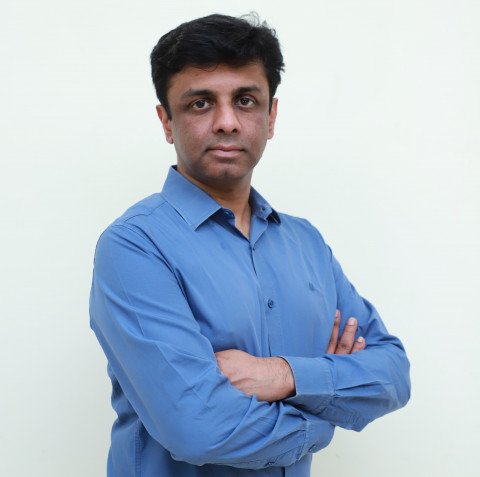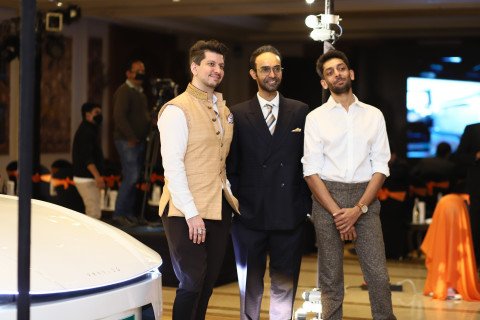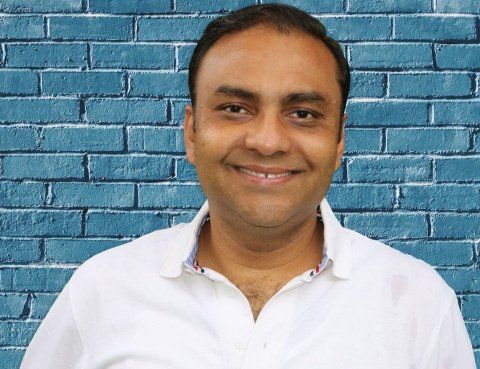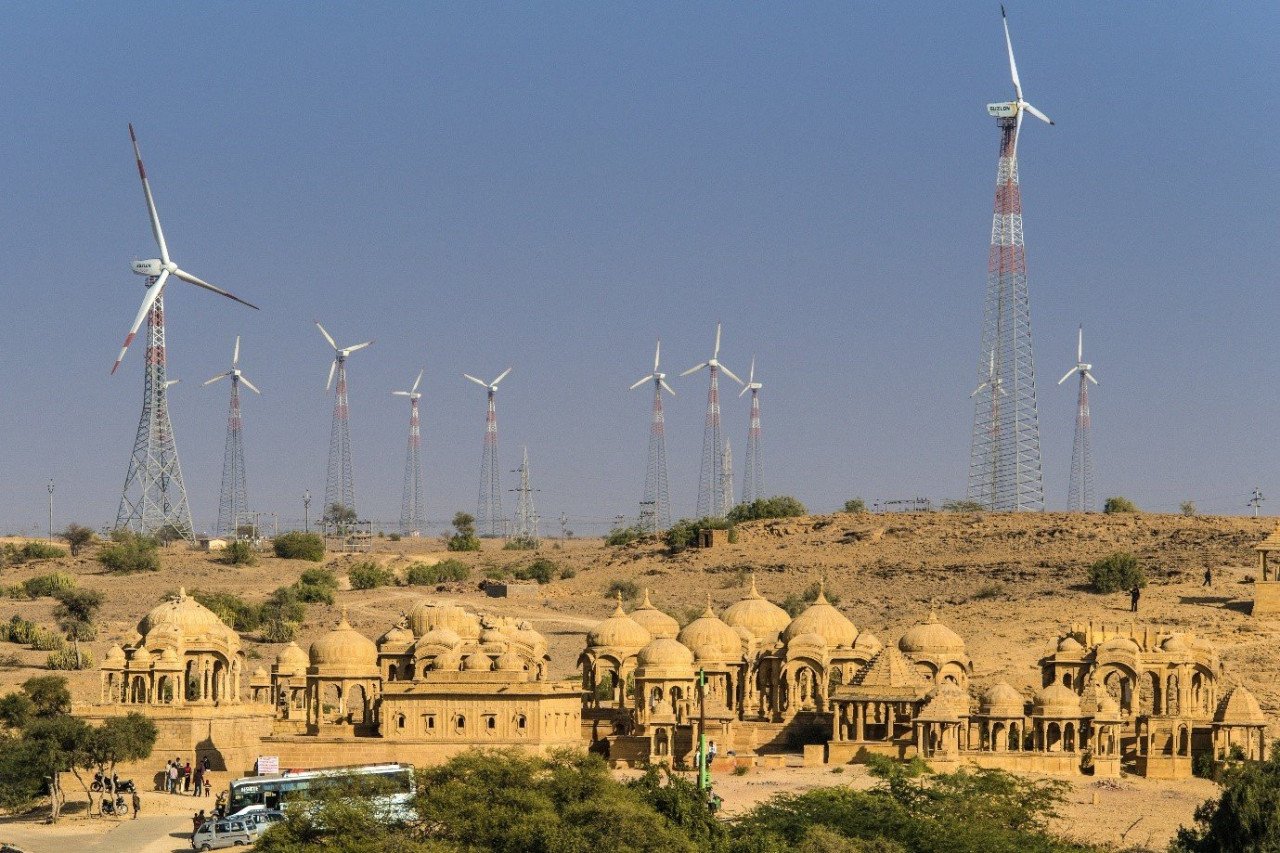Powering Global Energy Transition Through Storage
In today's climate-conscious world, battery storage comes up as a key component in achieving the shift towards sustainability through renewables. In a question-answer session, Achal Sondhi, VP Growth – Fluence, APAC Region, discusses the company's supporting role in achieving this.
Q: Tell us about how Fluence was established?
A: Energy storage, and in particular battery storage, is a new technology. Learning curves and experience curves are reducing far quicker today. Where the gas industry might have taken about 30 to 50 years, the solar industry would be less than 20 and the wind industry will be 25 years. I think battery storage has taken just 10 years to become so commercially viable.
Back in 2008, AES was successful in deploying one of the first 1 MWh storage batteries in the United States. We continue to develop and innovate how battery storage can support and enable a larger share of renewables on the grid. Besides intermittency, there were many other aspects that AES realized it can research and support, thus enabling more business cases in optimizing the grid. Over time Siemens also became very interested in this space because of its important role in changing the way we power our world and Siemens is also on that same mission. In 2018, both companies saw complementary teams and expertise come together and serve the world as the storage technology provider. That is how Fluence formed a 50-50 partnership between Siemens and AES.
Siemens is historically a technology provider in the gas and wind turbine space and saw this as another product that they could build out to service the world. AES is traditionally an Independent Power Producer (IPP) developer, but having such several projects themselves, they saw an avenue to provide products and services to enable other companies and utilities to bring storage to the ground. AES is a parent at arm's length, with Fluence as an independent company governed by a Board, allowing us to innovate and deliver products around the world. Today, things have changed, and we have rapidly grown in bringing on more investors and also recently gone public. With that our original parent still plays a major role in the organization as owners, but we have a lot more investors now in the pool.
One thing to mention is since we started in APAC [Asia-Pacific] back in the day, at Fluence we were just one person in the APAC region; today we are well over 160 people.
Q: Fluence has over 34,000 MWh plus energy storage assets either deployed or contracted or under asset management. This is across 150 plus projects and 30 countries. Certainly, this provides tremendous learning from each, also learnings from deployments that are specific to regions. Could you highlight a few of these?
A: It has been a tremendous journey in a short span of three years. Delivering excellence is one of our core features which we achieve in what we innovate, in what we do, and how we cater to each market. Having a team that has been deploying energy storage since 2008, pilots have happened many years ago. At Fluence, we started deploying ever-larger projects, well into the 100 MW scenarios. With that comes a lot of complexities and that is where Fluence brings value. One is reliability and delivering large projects that will be safe, work well, be available and most of all, be maintained for 20 years as per our service agreements. Having that kind of experience under our belt helps us be sure we can achieve that level of excellence.
There are examples of what people might think are trivial, but with our experience, it is just these that bring us a step ahead at times. During a deployment in a particular country, the system did not have an AGC or automatic generation control system up and running and planned for it in the next year or two. AGC is for frequency regulation or control that is done by the central utility, which commands a plant to dispatch automatically when there is a certain amount of power required. Normally this is a frequency control mechanism.
Instead of running the plant on a droop curve function at the site sub-station, they wanted to run it more centrally so they could enable the AGC. Our team that has been doing this around the world figured out a way the central utility could send a signal through the SCADA (supervisory control and data acquisition) network to the system to go into a power dispatch mode along the loop curve, and once you change the state command it will return to a state of charge mode to bring the system back to its optimal level of charge. That was one application that we were able to do quickly, having done it in many countries - cheaply for the customer and cheaply for the utility, and work with the utility on what they wanted. So, that is us being innovative but delivering with experience.
The other side of the question is when it comes to all the technicalities around deploying and connecting an asset to the grid, making sure the foundations are good as well as adequate. How do you carry out the commissioning process when the utility has never been commissioned before or maybe that sub-station or that part of the network has never done the commissioning of a battery before? Having an experienced player on the other side to guide the norms, the testing protocols, as well as the amount of testing required help. The last thing a customer wants to pay for is seven months of commissioning or testing versus two weeks. This can happen if the utility is unsure what exactly they want or don't have a path to follow.
Experience is crucial in terms of ensuring the job is done and delivered on time. Most of all, because we are a committed storage company, our entire organization is finding ways to optimize deployment and problem-solving. Also, we are not conflicted in delivering one technology over another but will always find the most optimal way to deliver a storage project anywhere in the world.
Q: Could you briefly touch upon safety and standards? Would you also elaborate on the requirement of skill development in these new regions where the energy storage assets are being deployed?
A: Safety is at our core, and everyone is mandated to go through safety training inside the office or outside - it is a part of our everyday living. We have onsite asset training safety but also in the office and we ensure that everyone in the organization is looking out for the potential near misses and ensure that everything we do is at the heart of safety.
When we look at new countries, safety systems are often not in place for storage systems. They make carbon copies from baseline or other countries. But safety standards need to be adjusted for individual countries and what is typical for each – monsoon or typhoons, etc. This is not always easy, there is no set formula and some regions may even claim there is no safety requirement. In such cases, we say it is mandatory on our side to ensure the safety of these systems. It is also very important to set a standard for the rest of the industry. We do know a lot of countries that don't have it, and we would not like to work without some sort of safety standards. Not only is it not the right path for the industry; it is just not something we would accept.
Having said that, what is great about the world today is everyone understands the importance of safety and is very responsible in this regard. Customers do ask how they should teach their team to operate a certain asset and be part of the site training. As part of our service and system offering, we have modules to train onsite staff as first responders for when there is an issue. We also train the first responders in the community to give them an insight into what the facility is, the concerns around it, how one can stop the facility if one needed to, what are brake mechanisms in the facility, and what are the different warning signs in the unlikely event there is a situation to handle. It is important for the concept of safety to cascade across anyone we work with, the industry, and hopefully the globe at one point.
Q: Financing such projects is not very streamlined today. What could you tell us about financing storage and the different models you have experienced around the world?
A: Asia is the next region for the evolution of the storage industry. In the UK and USA, the markets are thriving as also Australia. One sees projects being put on the ground and then acquiring financing. I think the next set of countries will also start seeing similar financing and it comes with two sides of any project. It involves the offtake and its reliability as a first. The other side is the technology and its reliability aspect: are the LBs bankable, are the commercials in place? Many people on entering the financing world start calculating at what rate they can finance the project, and at what rate they can get insurance.
There are a few of the tier one companies that come on top after due diligence is done, after checking the LBs behind it and who is supporting that LB. I think those aspects are now tilting people's decisions on whom they work with. As these projects are high CAPEX, and financing is becoming more of an interest, people are viewing how many people have set up a 1000 MW in the world, delivered them, managed to ensure that the entire system is operational; and whether the company can stand by the commitment it made for an extended period? That is becoming an increasingly prevalent question, especially in the UK, USA, and Australia and now in some parts of Asia as well. That is going to be the next step in the evolution - the project finance tanks, and insurance companies will be able to provide more products to support this industry.
Q: Fluence has a variety of customers from utilities, network companies, IPPs, even the commercial industrial segment. What are some of the key drivers of business growth in your view?
A: I think the experience curve of new technology or products is speeding up around the world. So, more and more people now understand how storage brings value to the grid, to a project, to a distribution network, which is translating to business cases becoming much more favorable over time. A few years ago, battery storage replacing peaker-plants was one of the more prevalent business cases - why would one need to build another peaker in America when one could instead build a battery that would support the peaking capacity when required. Then you had a combination of solar-plus-storage, which would almost take up some of your mid-merit plants that continue to benefit with peakers.
Now, we are seeing business cases around transmission applications. We are seeing storage-as-transmission picking up. Around the region of Lithuania where we did a project, we have got inquiries for over a gigawatt that are related to storage as a transmission asset. These are serious projects and people are evaluating between either differing a high CAPEX investment, which is a large transmission line upgrade, which will be underutilized for the next 15 years – or opting for the storage plant instead. The business case - because of where prices are today and probably even were two years ago – is making sense to have storage as a way of deferring a high CAPEX investment that will be underutilized. That was the same premise apparent in the peaker concept: if you were making a high CAPEX asset deliver only a few times a year, be it gas or coal that was running at less than 80 percent a year, then you are under-utilizing the spend on that asset. That is where storage starts playing a major role to bring value.
So, we are seeing storage business cases becoming more prevalent, be it in SE Asia or India. The Australian market is booming in all these applications. The question then becomes, where is the commercial structure to support it or the payment mechanism? That, I think is a top-down decision that needs to happen, which will help or enable people to think through the commercial payment structure. But the business case exists, and the fundamentals are there to drive such an application.
Q: Coming to India, at COP26 we committed to achieving 50 percent of our energy requirement from renewables by 2030. India has come out with the first gigawatt-hour tender by SECI. What are your thoughts on the energy storage potential in India and the unique opportunities and challenges faced here?
A: India is a strategic market for us at Fluence. We have a 10 MWh system in Delhi which was one of the first systems deployed. It not only enables us to have a bit of experience in connecting a system to the grid but also in running a system for two years with all the climate nuances in India. We are committed to the Indian market, and with this tender that has just come out, we believe it's just the tip of the iceberg.
Frankly, there are many fundamental markets out there for whom the need for storage is just a given. Most of these markets have high renewable penetration of plants, high renewable penetration of mid-merit coal, lack of local gas supply - that is like the right ingredients for storage. You need the flexibility to support the renewables; your gas supplier or gas projects are limited, so it creates flexibility and enables the energy transition. Here, storage is one of the faster mechanisms. It is integral to achieving that target; we believe that storage should itself be a target to enable that. So, if you have an energy storage target that supports the renewable target, then you are further enabling the potential of this renewable target being executed. Given how the network is set up, how we have a lot of mid-merit coal enabling this transition - storage will take it to the final step and make sure that we get there.
Potentially, the fundamentals driving storage in India are very high. The commercials that enable payment for such a system need to be worked out a bit more. To do that one needs all stakeholders to work together. The quickest way to bring all stakeholders together is to set a target: saying we need 200 GWh of storage by 2030 to support renewables is telling everyone in the system, "Find a way to make these payments work, find a way to make these business cases work." If not, people may say they want to wait for something cheaper, longer duration, instead of finding a way to make this work. This is what other countries have done. Once they said they needed storage, they found what changes in rules were needed to enable a payment mechanism for a short duration system between the hours of 06:00 to 10:00 p.m. or 4-8 hours or even one-hour duration. Any sort of payment mechanism to help optimize the grid for those gaps, because you have a lot of renewables, you have coal that is reaching its technical limitation and you have a gap to fill, otherwise, you are wasting a lot of energy. That would require some regulations and policy changes. It is just a matter of thinking about how to procure these assets instead of procuring more expensive assets that are underutilized. Bringing everyone together with a target is probably one of the first steps that will help do that. Here, the MoP [Ministry of Power] tender is in the right direction and an excellent step; a lot more steps are to be taken, but the direction is right.
Q: What role can an alliance like India Energy Storage Alliance (IESA) play in this segment?
A: IESA has been around for several years and has been instrumental in bringing the necessary awareness regarding this critical sector. Fluence being part of IESA has seen vital information exchange benefits, getting the right information from the stakeholders, and sharing it. Its role is to bring together the momentum that is now apparent in the country. All the stakeholders together have a mission to do something to make this a cleaner future. How do we bring this together and make it executable? That is where IESA's role comes in – to bring together all the stakeholders including industry, government, individuals, advisors, and say what do we need to do to enable this mechanism; what are the top five things we need to do to reach our goals.
IESA can very effectively share what is happening in the market, what ideas are out there, what information. But they also have a right to show what is going to happen if we don't do the right thing in deploying more storage so we can have more renewable generation. It should be putting together views of the world or India and show how overall the cost comes down if we do deploy the storage that we want, the renewables we want. Maybe some coal plants have to retire earlier than expected and incur losses. But overall, the system, the ratepayer, the Indian consumer, and the air we breathe will be better. Putting forward that view then serves as an indication that it is a top-down support mechanism that is required to enable it. That is where IESA's role lies. Being part of the leadership circle, we are in full support, but of course, this is where IESA can bring a lot to the table because it is an independent organization and can bring in an independent and balanced view as well as a factual outlook to all stakeholders.
Q: Fluence is not involved in manufacturing batteries, could you explain?
A: We are not vertically integrated into battery manufacturing for the one reason that we want to remain agnostic to battery supply if some combination of chemistry can change the scenario of the storage world quite a bit. Today, we might have a system that is prevalently NMC, tomorrow we might have a system that is LFP and then there may be one that comes in 10 years. So, we want our systems to be flexible to change to the type of technologies of the future. If you have a system that is there for 20 years to support the grid and we need to augment the power in 10 years, enabling it to be augmented with something different, it should be an option in case the prices show it as desirable.
The second thing is, having a flexible supply chain for different chemistries: what is the actual application needed – high density, high power, or longer duration. That is another reason we have this kind of flexibility which is why we have not vertically integrated.
Q: Could you elaborate on the existing partners or new ones you intend to forge moving forward?
A: In terms of our supply partnerships, we have three or four strategic partnerships for the supply chain in the world, which also gives us a lot of benefits because we can supply not necessarily on pricing, but can maintain supply, despite the shortage. A large contract also means we have well-established processes with these suppliers. So, any sort of warranty, changes, augmentation, any support to the system – because we are such large partners - we enable that process faster, we can handle that situation for our customers easily. This is a big plus and brings a lot to the table. We get treated as a priority because of our bulk relationship. Having a large supply chain like that around the world, allows us to support different customers and utilities in different countries to bring storage to the ground.
(The interview was conducted by Netra Walawalkar for ETR. The conversation was transcribed and edited by Kathy Priyo for ETN.)


















